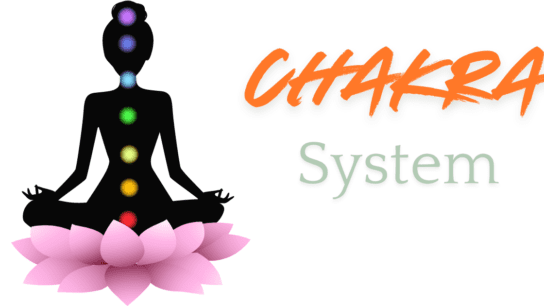Ati Yoga, also known as Dzogchen, is one of the most advanced and transformative practices in the realm of yoga and meditation. It is revered for its profound approach to spiritual realization and enlightenment. This pillar post will explore the essence of Ati Yoga, its historical context, core principles, key practices, and its connection to Buddhism. We will also cover various aspects like Ati Guru Yoga, Bikram Yoga meditation, and more, to provide a thorough understanding of this practice.

Introduction to Ati Yoga
Ati Yoga, often referred to as Dzogchen, translates to “Great Perfection” or “Supreme Yoga.” This practice aims to reveal the inherent purity and clarity of the mind, transcending the limitations of conventional spiritual paths. Ati Yoga is renowned for its direct approach, which emphasizes experiencing the true nature of mind rather than following complex rituals or intellectual understanding.
What is Ati Yoga?
The meaning of Ati Yoga can be understood as a practice designed to help individuals recognize and abide in their intrinsic nature. Unlike other forms of yoga that focus on progressive stages of practice, Ati Yoga offers a direct path to experiencing one’s natural state of being. This practice is central to the Nyingma tradition of Tibetan Buddhism, where it is considered the pinnacle of spiritual realization.
Historical Context and Origins

Ati Yoga’s roots are deeply embedded in the early teachings of Tibetan Buddhism. It was introduced to Tibet by Padmasambhava, also known as Guru Rinpoche, in the 8th century. Padmasambhava’s teachings on Ati Yoga have been preserved and elaborated upon by numerous Tibetan masters throughout history.
The Role of Padmasambhava
Padmasambhava is a seminal figure in the transmission of Ati Yoga. His teachings, which form the foundation of Dzogchen, emphasized direct recognition of the mind’s natural state. His arrival in Tibet marked a significant turning point in the development of Tibetan Buddhism, and his contributions to Ati Yoga remain influential to this day.
Development Through Tibetan Masters
Following Padmasambhava, various Tibetan masters contributed to the evolution of Ati Yoga. Key figures include Longchenpa and Jigme Lingpa, who played crucial roles in systematizing and transmitting the teachings of Dzogchen. Their writings and teachings have shaped the practice of Ati Yoga and continue to guide practitioners.
Core Principles of Ati Yoga
Ati Yoga is based on several core principles that are crucial for understanding and practicing this profound path. These principles are designed to help practitioners realize their inherent nature and achieve spiritual enlightenment.
1. Primordial Purity
Primordial purity is a fundamental concept in Ati Yoga. It asserts that the mind is inherently pure and free from defilements. The practice of Ati Yoga involves recognizing this intrinsic purity and abiding in the natural state of mind.
2. Natural State of Mind
The natural state of mind, as described in Ati Yoga, is characterized by clarity and emptiness. Practitioners aim to experience this state directly, beyond the distractions of conceptual thoughts. This natural state is considered the “original face” or “natural state” of the mind, free from dualistic perceptions.
3. Non-Dual Awareness
Non-dual awareness is a central tenet of Ati Yoga. It emphasizes the inseparability of wisdom and compassion, emptiness and form, subject and object. Practitioners strive to transcend dualistic distinctions and experience the unity of all phenomena.
4. Direct Introduction
Direct introduction, or pointing-out instructions, is a critical aspect of Ati Yoga. A qualified teacher provides direct guidance to help students recognize their intrinsic nature. This process bypasses intellectual understanding and facilitates direct realization.
5. Three Aspects of Practice
Ati Yoga practice is often divided into three key aspects:
- Trekchö (Cutting Through): Focuses on cutting through conceptual obscurations and habitual patterns to recognize the natural state of mind.
- Tögal (Leap Over): Involves direct engagement with the natural state through various techniques, including visualizations and spontaneous experiences.
- Integration: Entails applying the insights gained from Trekchö and Tögal into daily life, allowing wisdom and compassion to permeate all activities.
Key Practices and Techniques
Ati Yoga incorporates various practices and techniques designed to help practitioners experience and abide in the natural state of mind. These practices are typically taught by qualified teachers and are tailored to the individual’s needs and level of experience.
1. Ati Yoga Meditation
Ati Yoga meditation is a foundational practice aimed at experiencing the natural state of mind. This meditation involves sitting in stillness and allowing the mind to settle into its inherent clarity and emptiness. Practitioners observe the arising and dissolution of thoughts without attachment or aversion.
2. Ati Guru Yoga
Ati Guru Yoga is a practice that involves visualizing and connecting with an enlightened teacher or guru. This practice helps practitioners embody the qualities of enlightenment and integrate these qualities into their experience of the natural state.
3. Visualization Practices
Visualization practices in Ati Yoga involve imagining enlightened beings or symbols. These visualizations help practitioners connect with and embody the qualities of enlightenment, such as wisdom and compassion.
4. Dream Yoga
Dream Yoga is a practice that involves becoming aware of the nature of mind while in the dream state. Practitioners work to recognize the illusory nature of dreams and integrate these insights into their waking state.
5. Phowa (Transference of Consciousness)
Phowa is a practice aimed at facilitating the transference of consciousness at the time of death. In Ati Yoga, Phowa prepares practitioners for the process of dying, ensuring a smooth transition and favorable rebirth or liberation.
Ati Yoga and Buddhism
Ati Yoga is deeply connected to Buddhism, particularly within the Nyingma tradition of Tibetan Buddhism. Its teachings and practices are rooted in the broader Buddhist context, offering a direct path to enlightenment.
1. Ati Yoga and Buddhism Alan Wallace
Alan Wallace, a prominent scholar and practitioner, has contributed significantly to the understanding of Ati Yoga within the context of Buddhism. His teachings emphasize the integration of Ati Yoga practices with traditional Buddhist principles, providing a comprehensive approach to spiritual realization.
2. Ati Yoga Definition
The definition of Ati Yoga encompasses its role as a direct path to experiencing the natural state of mind. It is distinguished from other practices by its emphasis on direct experience rather than gradual progression.
3. Maha-Anu Ati Yoga
Maha-Anu Ati Yoga is a more advanced level of Ati Yoga practice, focusing on the most subtle aspects of mind and reality. This practice is typically pursued by advanced practitioners seeking to deepen their understanding and realization.
Common Practices and Misconceptions
While Ati Yoga is a profound practice, there are common misconceptions and challenges that practitioners may encounter. Understanding these can help clarify the nature of Ati Yoga and guide practitioners on their path.
1. Ati Ganda Yoga Remedies
Ati Ganda Yoga refers to practices associated with overcoming obstacles and challenges in one’s spiritual journey. These remedies are designed to address specific issues and support practitioners in their path to realization.
2. Ati Stitch Yoga
Ati Stitch Yoga, including variations like Ati Stitch Yoga Portland, refers to practices that integrate the principles of Ati Yoga with specific techniques or approaches. These practices may be tailored to individual needs and contexts.
3. Ati Yoga Posture
The posture in Ati Yoga meditation is typically relaxed and natural, reflecting the practice’s emphasis on ease and simplicity. Practitioners are encouraged to find a comfortable position that supports their ability to experience the natural state.
Integrating Ati Yoga into Daily Life

Integrating Ati Yoga into daily life involves applying the insights gained from practice to everyday activities. This integration helps to cultivate wisdom and compassion in all aspects of life.
1. Ati Yoga Retreats and Training
Ati Yoga retreats and training programs provide opportunities for immersive practice and learning. These retreats offer a supportive environment for deepening one’s understanding of Ati Yoga and integrating its principles into daily life.
2. The Sun Ati Yoga
The Sun Ati Yoga refers to practices and teachings related to the illumination of the mind’s natural state. This metaphorical concept emphasizes the clarity and brilliance of the mind when it is fully recognized and experienced.
Conclusion
Ati Yoga, or Dzogchen, represents the culmination of spiritual practice, offering a direct path to the realization of one’s true nature. Its profound simplicity and emphasis on direct experience make it a unique and powerful approach within the broader context of yoga and Buddhism. Whether through meditation, visualization practices, or retreats, Ati Yoga provides a transformative path to understanding and embodying the natural state of mind.
By exploring the principles and practices of Ati Yoga, practitioners can gain valuable insights into their own nature and embark on a journey of profound spiritual realization. As with any advanced practice, it is essential to approach Ati Yoga with guidance from qualified teachers and a deep commitment to the path.
Frequently Asked Questions (FAQs) about Ati Yoga
1. What is the meaning of Ati Yoga?
Ati Yoga, often known as Dzogchen, translates to “Great Perfection” or “Supreme Yoga” in Tibetan. The term encapsulates a profound spiritual practice aimed at revealing the mind’s inherent purity and clarity. Unlike other forms of yoga that involve gradual stages of practice, Ati Yoga emphasizes a direct path to recognizing one’s intrinsic nature. This practice is centered on the realization of the mind’s natural state, transcending ordinary conceptual limitations to experience its inherent perfection and wisdom.
2. What is the tradition of Ati Yoga?
Ati Yoga is a central practice within the Nyingma tradition of Tibetan Buddhism, which is the oldest of the four major schools of Tibetan Buddhism. The tradition of Ati Yoga is characterized by its direct approach to spiritual realization. It was introduced to Tibet in the 8th century by Padmasambhava, also known as Guru Rinpoche. The practice has been elaborated upon and preserved by various Tibetan masters over the centuries, including figures such as Longchenpa and Jigme Lingpa. Ati Yoga is considered the pinnacle of spiritual practice within this tradition, focusing on the direct experience of the mind’s natural state rather than relying on gradual developmental stages or extensive rituals.
3. What are the benefits of Ati Ganda Yoga?
Ati Ganda Yoga refers to practices associated with overcoming spiritual obstacles and challenges on the path to realization. The benefits of Ati Ganda Yoga include:
- Overcoming Obstacles: Helps practitioners address and overcome personal and spiritual impediments, allowing for smoother progress on the spiritual path.
- Enhanced Clarity: Improves clarity and insight into one’s spiritual and mundane challenges, fostering a deeper understanding of one’s practice and obstacles.
- Increased Resilience: Builds resilience and strength to face difficulties with a more enlightened perspective.
- Spiritual Growth: Supports accelerated spiritual growth by addressing and resolving issues that may hinder progress toward higher states of consciousness and realization.
4. What is the best yoga qualification?
The best yoga qualification depends on individual goals, interests, and the specific yoga tradition one wishes to pursue. For those interested in Ati Yoga (Dzogchen), it is essential to receive teachings and guidance from qualified Tibetan masters who are well-versed in this advanced practice. In general, the following qualifications can be valuable:
- Certified Yoga Teacher Training (CYT): For general yoga practice and teaching, certifications from reputable yoga schools, such as RYT 200 (Registered Yoga Teacher with 200 hours of training) or RYT 500, can be highly beneficial.
- Advanced Tibetan Buddhism Studies: For those focusing on Ati Yoga, advanced studies in Tibetan Buddhism and direct instruction from recognized masters in the Nyingma tradition are crucial.
- Personal Experience: Personal experience and direct realization under the guidance of a qualified teacher are paramount, especially for advanced practices like Ati Yoga.
5. What does ATI mean in Sanskrit?
In Sanskrit, the term “Ati” generally means “transcendence” or “exceeding.” It signifies going beyond ordinary or conventional limits. In the context of Ati Yoga, “Ati” implies a practice that transcends the ordinary stages of spiritual development to directly experience the ultimate nature of mind and reality. The concept of “Ati” embodies the idea of surpassing the dualistic and conditioned aspects of experience to realize a state of profound purity and perfection.




